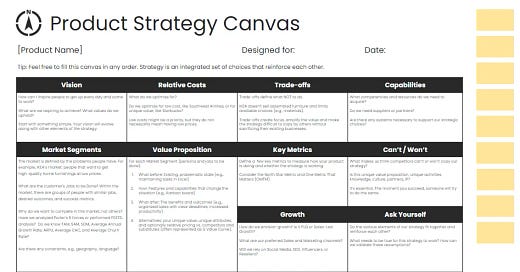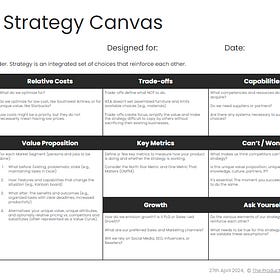Introducing the Product Strategy Canvas
After 5 months, I could not find a single Product Strategy Canvas I could recommend. So here is a new one.
Hey, the post you’re looking for is available below (Substack limitations).
The most recent version of the Product Strategy Canvas:
Product Strategy Canvas
·
Product strategy is simple. But, contrary to common misconceptions, it’s not:
- A plan (“we will build x, y, and z”).
- A goal (“we want to grow by 50% by 2024”).
- An ambition (“we want to be the best”).
- An action (“disable that feature”) (...)




